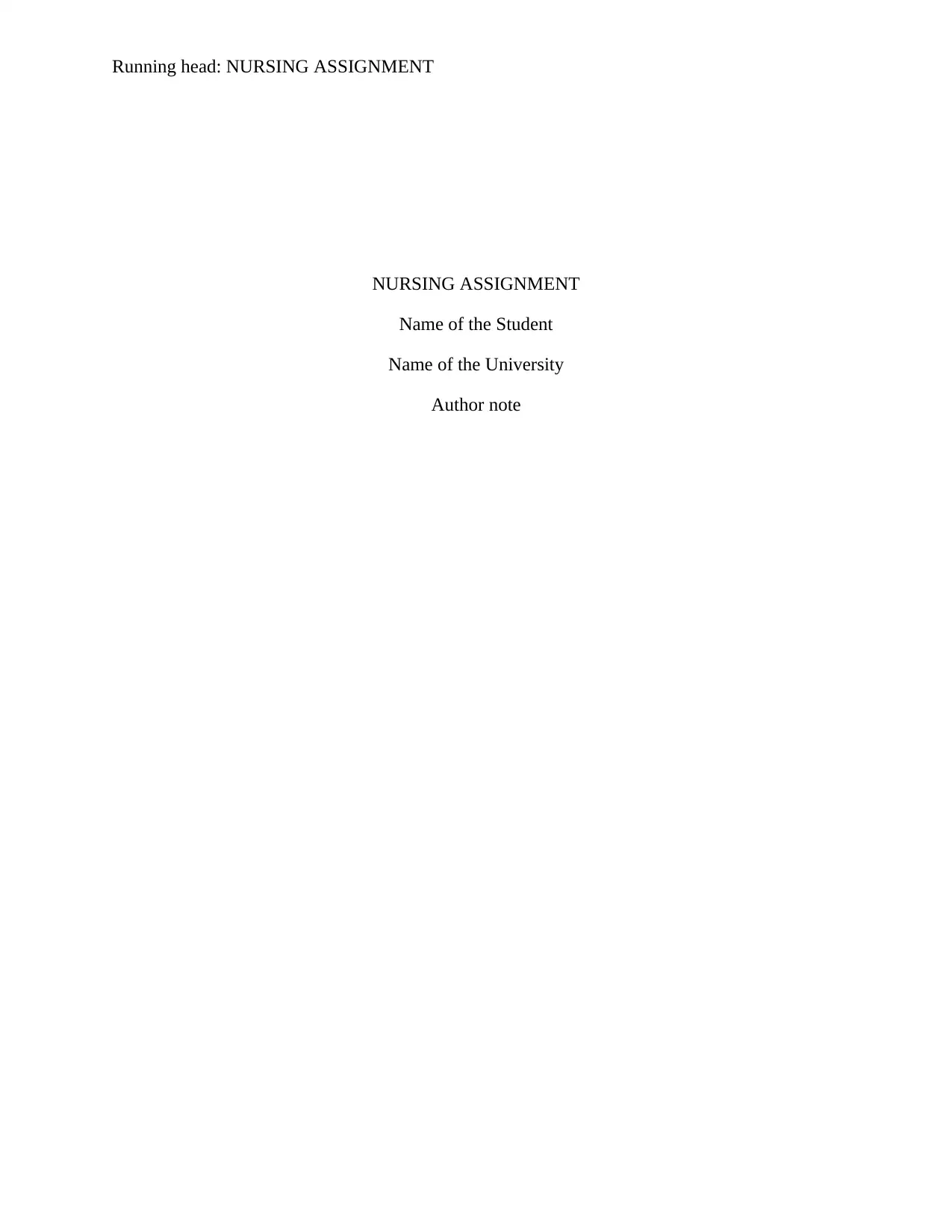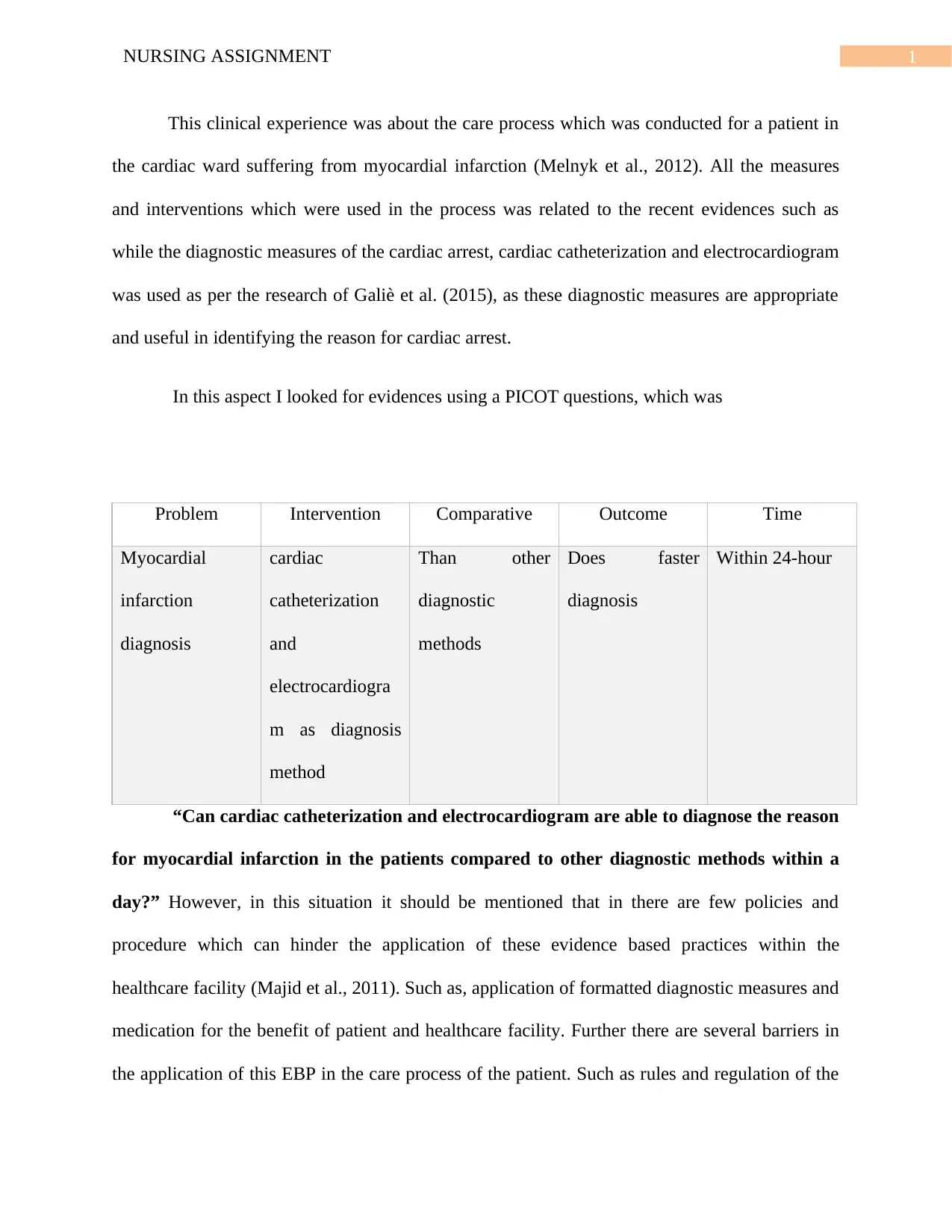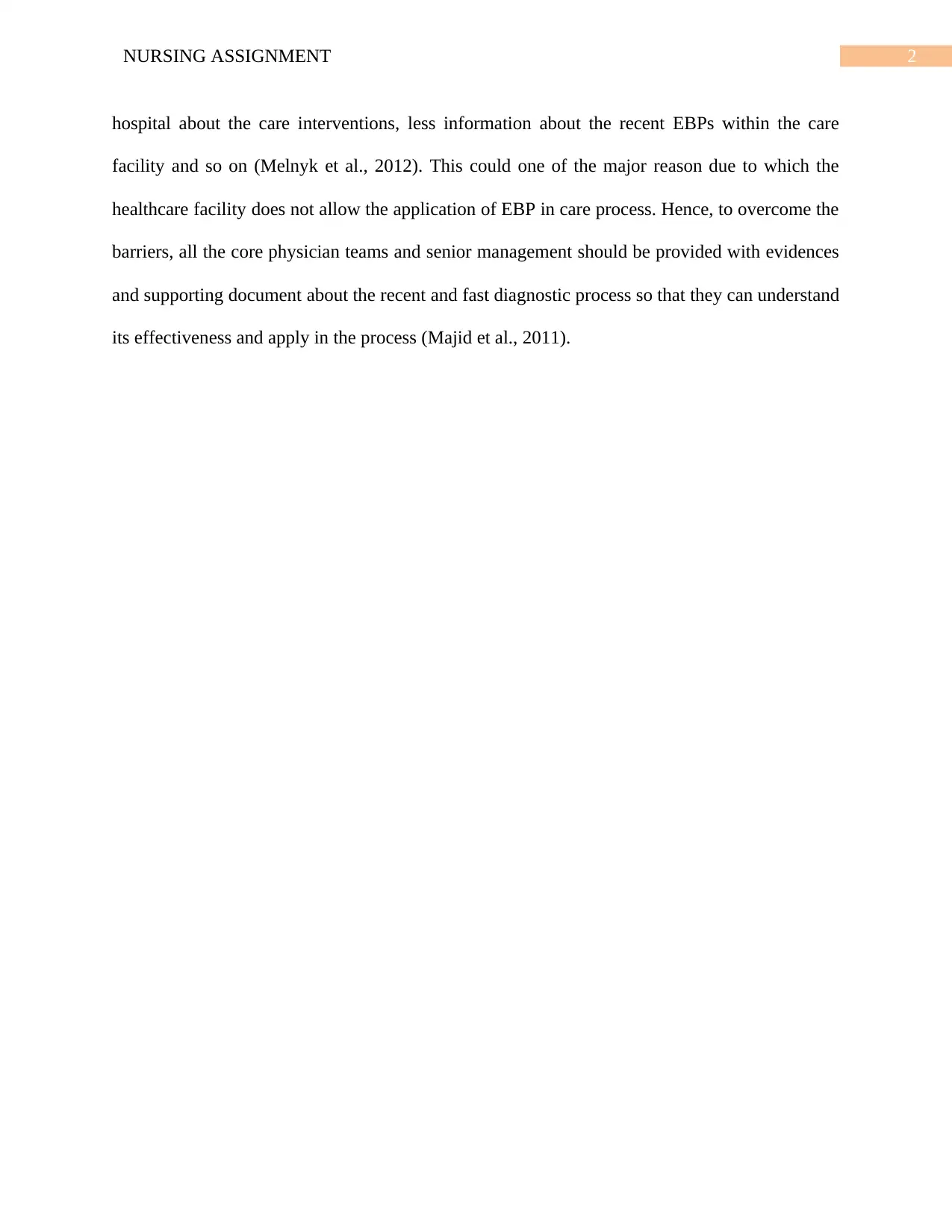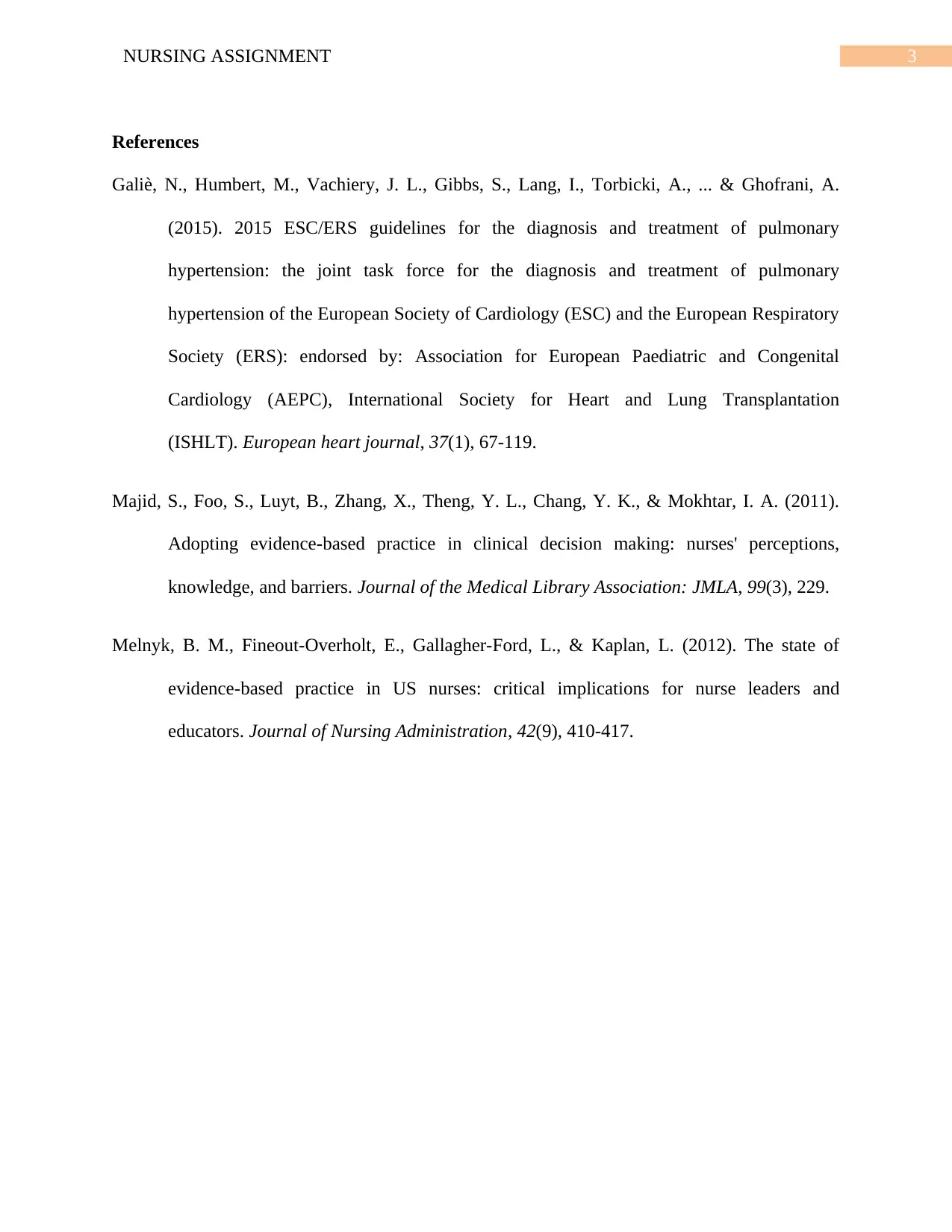Nursing Assignment: Cardiac Care and Evidence Based Practices
VerifiedAdded on 2021/12/17
|4
|601
|105
Report
AI Summary
This report presents a nursing assignment focusing on the care process for a patient with myocardial infarction in a cardiac ward. The assignment explores evidence-based practices, specifically the use of cardiac catheterization and electrocardiograms as diagnostic methods, referencing relevant research and guidelines. The report also addresses a PICOT question to assess the effectiveness of these diagnostic measures. Furthermore, it identifies potential barriers to implementing these evidence-based practices within a healthcare facility, such as hospital policies and a lack of information. The report concludes by suggesting strategies to overcome these barriers, emphasizing the importance of educating healthcare professionals about the benefits of these diagnostic methods and incorporating them into patient care. References are provided to support the discussed evidence and practices.
1 out of 4









![[object Object]](/_next/static/media/star-bottom.7253800d.svg)